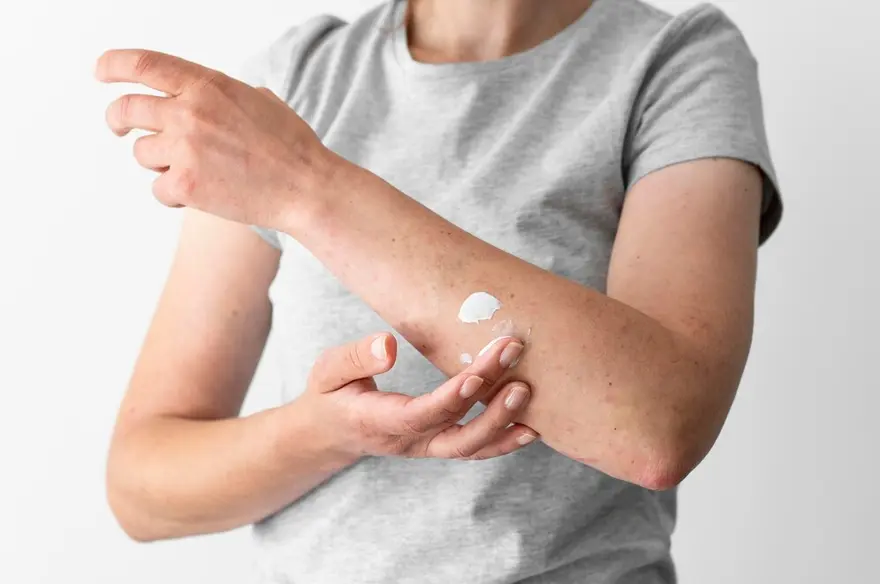Preventive Healthcare
Lower Back Pain: Causes, Symptoms and Treatments for Relief
3454 Views
0

Lower Back Pain: Overview
Lower back pain is a serial musculoskeletal issue that most people face at least once in a lifetime. This includes the sharp onset of pain around the dorsal abdominal region, making it worse with further mechanical movement.
Individuals can develop back aches from sudden muscle spraining or early signs of underlying chronic issues like kidney anomalies. However, these are curable conditions with early detection and prompt clinical support. Read this blog to learn more about the potential causes, symptoms, and treatments available for lower back pain relief.
What Leads to Frequent Lower Back Pain Issues? Symptoms
If you experience frequent lower back pain, it's easy to relate to the underlying conditions. Check out ten prevalent causes of frequent backaches in your daily life:
1. Inappropriate Posture
Individuals prone to long hours of strenuous work or sleeping in awkward postures are vulnerable to developing lower back pain. The former can lead to chronic complications, and the latter causes severe discomfort over time.
2. Few Mechanical Activities
Individuals with a sedentary lifestyle are more prone to back pain from long hours lying in a stationary position. There's a leading rise in lower back abdominal inflammation among most individuals performing desk work.
3. Untreated Muscular Issues
A previous abdominal muscle sprain left untreated can reappear as recurring back pain. If you have an abdominal muscle injury or a recent surgical wound in your back, it can lead to sudden backaches.
4. Degenerative Illness
Auto-immune disorders like rheumatoid arthritis gradually trigger inflammation and stiffness. It leads to recurrent back pain. It worsens with the progression of the illness. Given this non-curable ailment, it leads to muscular dystrophy.
5. Spinal Issues
Serial wear and tear of the back muscles can lead to spinal stenosis, meaning reduced interspinal space. It causes serial back pain as bones exert abnormal pressure on the spinal nerves. This leads to locomotory issues.
6. Vertebral Problems
The cervical and lumbar vertebrae get most affected by lower back pain. Excessive twisting and flexing lead to abnormal stretching of the muscle fibres. This may cause kyphosis, lordosis, and scoliosis.
7. Obesity
Overweight individuals with excess BMI are most prone to lower back pain. In addition, abnormal fat accumulation in the body leads to high LDL with an enhanced risk of CHD, fatty liver, and locomotory discomfort.
8. Psychological Issues
Individuals with PTSD and mental health issues experience heightened anxiety, along with a minimal sense of overall well-being. Conditions like this worsen lower back pain, making it chronic if left untreated.
9. Underlying Hernia
Hernia leads to the slipping of muscles or soft tissue between vertebral discs. It leads to serial inflammation with recurrent pain. Obese individuals are prone to develop lower back pain from herniated discs.
10. Age and Lifestyle Issues
Individuals with unhealthy lifestyles and those over 50 years gradually experience osteoporosis. It leads to shallow bone mass, causing sprain and inflammation in the abdominal muscles and serial back pain. It's also prevalent among individuals with a low RBC count.
How to Recognise Signs of Lower Back Pain Problems?
The road to back pain relief begins with recognising the potential symptoms of a viable backache. Learn more about the probable signs you may experience with a lower back issue:
- Unexplained problems with the musculoskeletal system
- Muscle stiffness and fatigue
- Inflammation at the transition of the coccyx (sacroiliac joint)
- Sharp pain in the vertebral joints (ascending towards the neck)
- Inability to bend or straighten out
- Pain below the ribs
- Recurrent back pain after little or light exercise
- Frequent bowel problems (IBS is a side effect)
- Sharp, painful twitch around the hip
Treatment for Lower Back Pain Relief
Rheumatologists relieve lower back pain with a combination of the following therapeutic agents. These include:
1. Drug Therapy
Anti-inflammatory drugs (NSAIDs, TNF blockers by oral and parenteral routes) significantly relieve recurrent pain. These drugs reduce inflammation and slow down muscle stiffness from lower back pain. They prevent further damage to the skeleton from a possible fall. This is often the case in patients with decreasing bone structure.
Your doctor can prescribe calcium supplements and multivitamins to counteract rapid demineralisation and prevent osteoporosis.
2. Physiotherapy
Postural therapy helps you cope with mechanical disabilities and general discomfort. This can lead to a natural lifestyle. It enables patients with lower back pain to perform everyday activities without fear of injury.
In addition, posture correction and specific exercises keep you in shape and strengthen core muscles to counteract skeletal weakness.
3. Surgery
Some patients with lower back pain develop complications in the hip. Your rheumatologist/orthopaedist may suggest surgery to prevent further worsening of the underlying symptoms. It helps treat patients with spinal complications, underlying hernias, spinal and vertebral issues, and untreated muscular trauma.
4. Lifestyle Corrections
A preventive lifestyle routine immensely helps in providing lower back pain relief. Here's what you need to do for gradual backache relief:
- Reduce extra weight
- Consume a prescribed diet for prompt healing
- Embrace workouts
- Sit on a hard surface over plush foam
- Get an orthopaedic-friendly mattress
- Never stay in a fixed posture for a long time
- Choose a comfortable sleeping position
- Practice yoga
- Prevent sitting or lying down in a distorted posture
Conclusion
Lower back pain is perhaps the most frequent musculoskeletal problem. It's a treatable condition. This means patients gradually recover from the underlying inflammation depending on the extent of the complication. However, a restricted lifestyle is essential to ensure thorough healing, as most patients ignore precautions after early bouts of overall wellness.
Also, consult your doctor and follow up for precautionary checkups if you experience unexplained lower back issues.
Your physician may recommend specific diagnostic tests like CRP, CBC, and sedimentation rates to gauge the extent of back pain. Do you prefer a sample collection at your doorstep? Metropolis Labs offers state-of-the-art diagnostic facilities through registered technicians for all your pathological tests. For more information on the best offer, contact Metropolis Labs today.
























